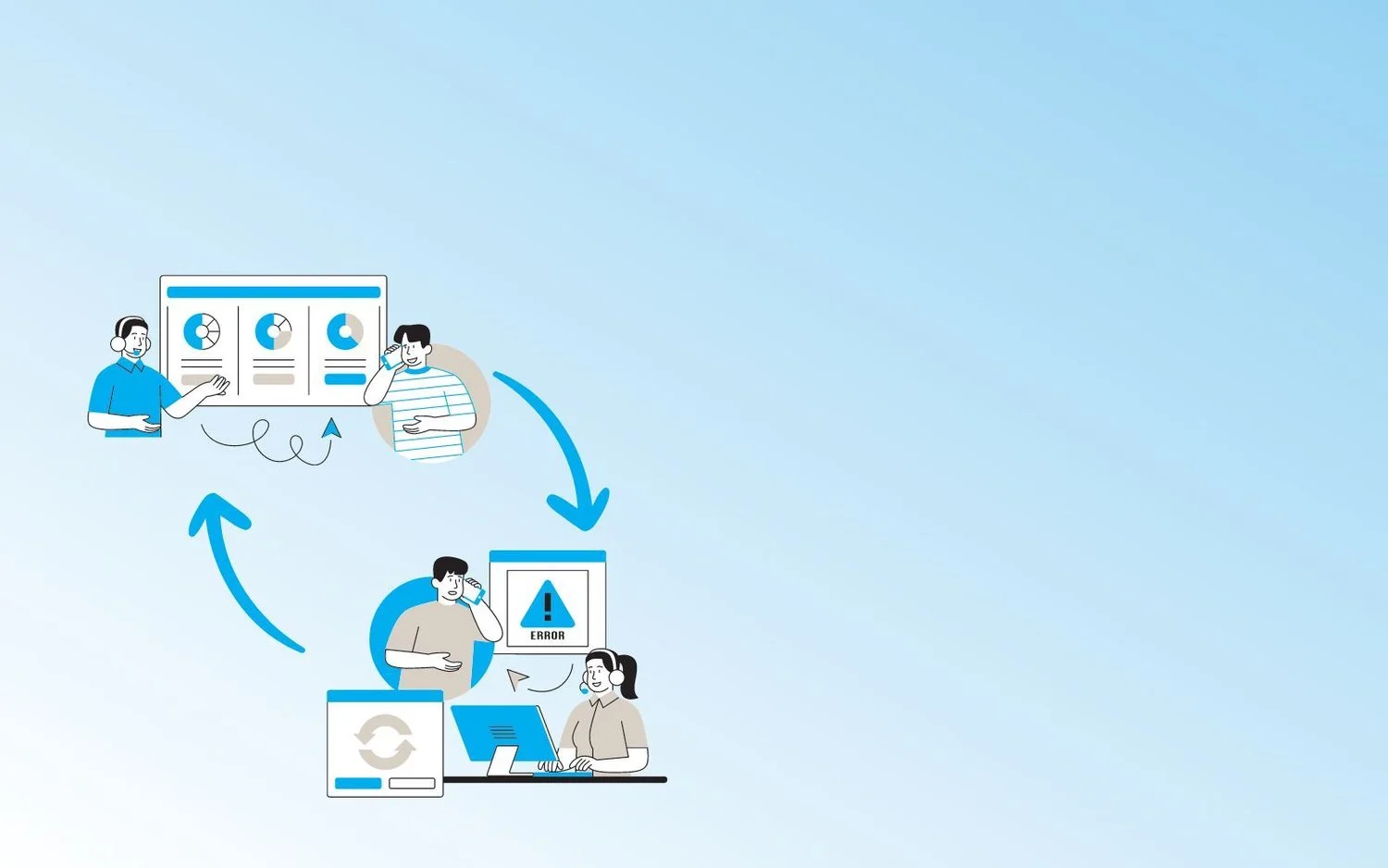How To Switch To A New Managed IT Services Provider
Switching to a new IT service provider can be a daunting task. However, it doesn’t have to be. If you choose the right Managed Service Provider (MSP), they will do all the heavy lifting using a wide range of tools, including automation, custom scripts, and applications, to make the transition quick and seamless, so you will have very little to do. In fact, if you choose an experienced MSP, like Jones IT, with mature policies and procedures, you will be pleasantly surprised at how smooth and easy the transition process is.
We’ve helped hundreds if not thousands of businesses transition from their old MSPs to us. Through that experience, we’ve identified common pitfalls and challenges businesses face when switching MSPs. Thankfully, with a little bit of planning upfront, you can avoid all such common challenges.
How To Switch To A New Managed IT Services Provider
1. Assess Your Current IT Environment
The first step for a successful transition is to get as accurate a picture of your current IT environment as possible. This can be done by conducting a comprehensive assessment of your organization's IT environment. The assessment will help you identify strengths and weaknesses, make informed decisions about improvements, and develop a roadmap for the transition and subsequent enhancements in IT performance.
Here are the steps involved in a typical IT environment assessment:
Create an inventory of all IT assets, including hardware, software, licenses, and peripherals.
Catalog all documentation related to IT policies, procedures, configurations, and historical performance data.
Evaluate and document the organization's network topology, bandwidth, connectivity, and network performance.
Compile a comprehensive list of all installed software, including versions, licenses, and usage.
Evaluate the usage and performance of cloud services, such as SaaS applications, IaaS infrastructure, and PaaS platforms.
Review security policies, procedures, and controls.
Conduct a thorough cybersecurity risk assessment to identify vulnerabilities, threats, and compliance gaps.
Evaluate data protection measures, including backup and recovery processes, encryption, access controls, and disaster recovery plans.
Your current MSP should be able to provide all the required documents and inventory lists relatively easily.
Once you have a complete picture of the state of your IT systems and environment, you should evaluate the IT services and support provided by your current MSP. This helps identify pain points, establish performance benchmarks, and reaffirm the reasons for switching.
Here are a few suggested steps for evaluating the state of your IT support:
Assess the availability and reliability of IT services, including uptime, downtime, and service-level agreements (SLAs).
Conduct interviews with key stakeholders, including IT staff, department heads, and end-users, to gather insights into their needs and experiences and feedback on their experience with IT systems and support services.
2. Define Requirements and Objectives
The next step in the process is to establish goals and objectives for the transition and expectations from the new managed IT services provider. The IT assessment conducted in the previous step will help you identify opportunities for improvement, innovation, and cost reduction.
After identifying the desired future state of your IT environment, compare it with the current state and industry benchmarks to identify gaps and opportunities. This information will enable you to develop a comprehensive action plan with specific initiatives and timelines.
The end result of this step should be a document with a detailed list of services and features you require from the new provider, such as network monitoring, helpdesk support, data backup, and cybersecurity measures. It should also define your expectations from the new managed IT services provider, including SLAs, response times, security, and compliance requirements. This comes in very handy when researching and finalizing your new MSP.
3. Research and Selection
After you’ve defined your requirements, it’s time to look for potential managed IT service providers. You can create a short list of potential providers based on their expertise, experience, reputation, and suitability for your business needs.
I’ve discussed the process of zeroing in on an ideal IT partner in detail in earlier blog posts that you can access using the following links:
How To Choose The Right IT Service Provider For Your Business?
Comprehensive Guide to Managed IT Services Pricing, Plans, And ROI
4. Contract Negotiation
After selecting a potential IT partner comes the crucial task of contract negotiation. You’ll want to carefully review the contract terms, including service level agreements, pricing, and termination clauses. Consider seeking legal advice to ensure the contract protects your interests and mitigates risks.
As a general rule, here are a few things you should avoid:
multi-year contracts,
unclear pricing and service terms,
confusing renewal, notice period, and termination clauses,
lack of scalability and flexibility to accommodate changes in the scope or scale of services as your business grows or evolves, and
subscriptions to proprietary software that you may have difficulty migrating away from.
5. Transition Planning
After signing the contract, you will have to work with the new provider to develop a detailed transition plan outlining timelines, responsibilities, and milestones. This is a very important step for ensuring that the transition is smooth and seamless. So take care to clearly define roles and responsibilities for both your internal team and the new provider during the transition process.
Typically, the complete transition process can take anywhere from 30 to 60 days. But before you fully onboard the new IT service provider, there will be a period where both MSPs are involved. You need to figure out how things will be handled during this period so that the transition from the old to the new provider happens smoothly. So you may have to request any necessary support from the previous provider to facilitate a smooth transition and ensure the handover of relevant documentation and credentials.
You’ll also need to set up a dedicated communication channel and regular meetings to facilitate collaboration and address any issues that may arise. Regular communication is crucial for ensuring progress, especially if the outgoing MSP is not cooperating with the transition.
6. Training and Onboarding
The next step in the process is to provide training to your employees on using new IT systems, tools, and processes introduced by the new provider. In most cases, the IT systems are unlikely to change but the ticketing system for raising support requests, communication channels, and escalation processes will change. This type of training is typically provided by the new MSP.
At the same time, the new IT services provider also needs to become familiar with your business operations, priorities, work culture, and expectations. The more settled they are in your IT and business environments, the better service they will be able to provide. So, it is highly advisable to schedule onboarding sessions with your new IT service provider to familiarize them with your business environment.
7. Go-Live
After training and onboarding is complete, it’s time for the most critical step of the process; it’s time to go live with the transition. Coordinate with your new provider to go live with their IT services. If you’ve planned well and scrupulously followed all the previous steps, things should go smoothly and your end-users will not even notice the change.
Nevertheless, you still need to monitor your IT systems for any issues or disruptions during the transition, as well as the next few days or weeks to ensure they meet your expectations.
8. Testing and Quality Assurance
After the transition, conduct a review of all IT systems and applications to ensure they function correctly and meet your requirements. Verify that the new provider delivers the agreed-upon services and meets the performance standards outlined in the contract. Compare the performance of the new MSP with the benchmarks documented when assessing your IT environment, which was the first step of the transition process.
9. Termination Of Previous Contract
At this point, you can notify your previous managed IT services provider of the termination of services in accordance with the contract terms. Ideally, this termination date will be as per the “Transition Planning” done earlier and your previous provider should be well aware of this.
10. Feedback and Continuous Improvement
The transition may be complete, but you aren’t done yet. You need to work just a little bit more to ensure the continued success of the transition project. Here’s what you need to do to ensure continuous improvement so that you don’t have to go about MSP hunting once again:
Conduct a post-transition review to assess the success of the transition process, identify lessons learned, and make recommendations for future improvements.
Gather feedback from your staff and stakeholders on the performance of the new IT services provider.
Address any issues or concerns promptly and work with the new provider to implement necessary improvements.
Regularly evaluate the performance of the new provider against your objectives and make adjustments as needed.
Conclusion
Any big change, especially one that impacts the ability of your organization to operate and be productive, can be daunting. Whatever the reason for switching your IT service provider, don’t lose sight of the reasons you chose to hire an MSP in the first place. With that in mind, follow the step-by-step process outlined above and you should be just fine.
However, if you still feel overwhelmed, Jones IT can help. We have been providing managed IT services for small and medium-sized businesses for over two decades and during this period have helped hundreds of businesses switch from their old service providers to us. Reach out to us by clicking the button below and we will ensure that your transition process is smooth, secure, and hassle-free.















